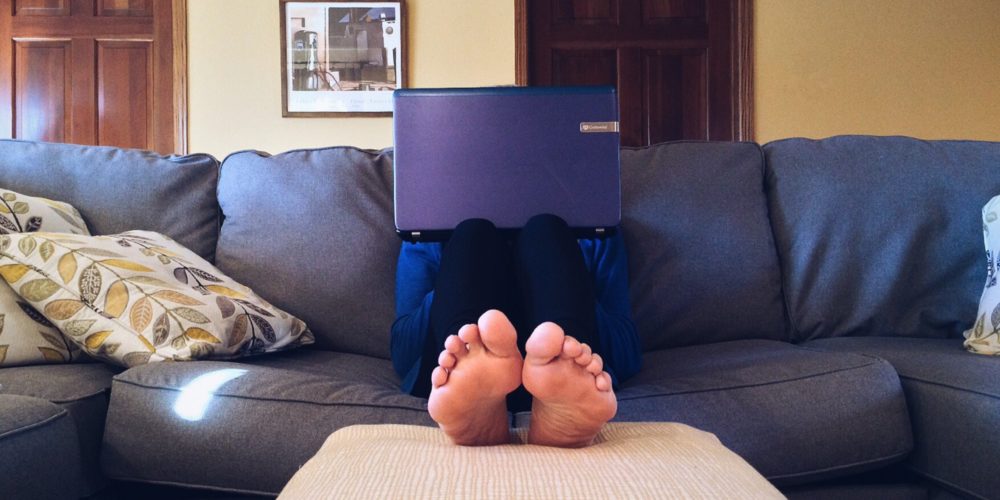Is your team working well from home?

When so many of us were sent packing by the coronavirus to work from home, one CEO told me: “This is terrible. My people can’t work from home.”
We know what he meant, don’t we? That he could not trust his people to do what’s necessary when they are not being watched from 8.00 am to 5.00 pm every day.
I said to him at the time: “Well, you’d better pray they can work from home. Because that will be the only game in town for a while. And whether they can or not will depend on you, not them.”
Thus began a huge experiment in remote working, all over the world. Most of the world’s offices emptied out overnight. Lots of people who had only ever worked in the traditional way – commute to a physical office every day, work while surrounded by dozens, sometimes hundreds of others, watch and be watched – were suddenly at home, in their pyjamas all day, unscrutinized – and yet with plenty of work to do. ‘The office’ was suddenly distributed to millions of homes. How’s that working out?
There were, of course, massive challenges. Many went home at the same time as their children, because schools were also closed right then. To be in the same house 24/7 as spouse, bored kids and even grandparents in many cases was not easy. Protocols and routines around shared spaces needed to be established, and family dramas navigated. Many went home without laptops or sufficient bandwidth to be able to work smoothly. And yet, most people adapted. Work has continued.
Whether the work is still being done well is another matter. And that hinges not on the employees, but on the bosses.
Here’s what the bad boss does with the sudden phenomenon of working from home (WFH). First, remain very suspicious about whether anyone is actually working. Next, send people home with minimal equipment or connectivity because you can’t trust them with company assets. Third, tell employees their personal challenges at home are not your problem, work is work. And last, try to replicate traditional workplace norms in the remote arena.
All of that can only end in tears.
I held a recent meetup (virtual, of course) with some of the more thoughtful alumni of my leadership programme. I made some points about the nature of leadership when your people are not in the same room as you, and what it takes to win at WFH. Let me share them here.
The first thing you need as a good leader is empathy – and that gets amplified even more in the virtual workplace. If you can’t put yourself in your employee’s shoes (slippers, these days!) and understand the conditions in which they are trying to meet your deadlines, you have zero chance of sustaining productivity. If you are a good boss, you should have had some candid chats with your key people as they went home to understand the circumstances in which they will be working – and equipped them to do so.
Secondly, trust must be strong in your team: your trust in your team members; and their trust in you. Trust is the foundation of leadership, and whether you have it or not will get found out when you are not face to face. You have to believe your team value their work and will do what it takes with minimal supervision; and they have to believe you have their best interests at heart even when they can’t see you in person to read your body language. If you were not building strong mutual trust for all these years, well guess what, the coronavirus will exploit a huge underlying weakness in the body of your team.
The third element is adaptability. Digital is different. Do not try to transfer your work norms to distributed homes – it has no chance of working. Think afresh. Understand when you need to hold video calls, and more importantly, when you do not. Know the difference between synchronous and asynchronous work. Don’t expect working hours to be what you thought they were.
If you play these elements well, you may be in for a surprise – a good one. You may find that a whole category of work is just fine when done remotely, and that you have learned a whole new box of tricks. You may find that even when we are all allowed to go back to our offices, we choose to go back differently, combining the best of what is physical and what is digital to make our shared work even better.
Next week, I’ll share some thoughts on the do’s and don’ts of remote working.
(Sunday Nation, 10 May 2020)

Buy Sunny Bindra's new book
The X in CX
here »
Popular Posts
- My books of the yearDecember 14, 2025
- Confessions of an explaining personDecember 7, 2025
- Here’s why you should become foolishNovember 30, 2025
- How to listen, really listenNovember 16, 2025
- Is AI hiring your company into oblivion?November 23, 2025















